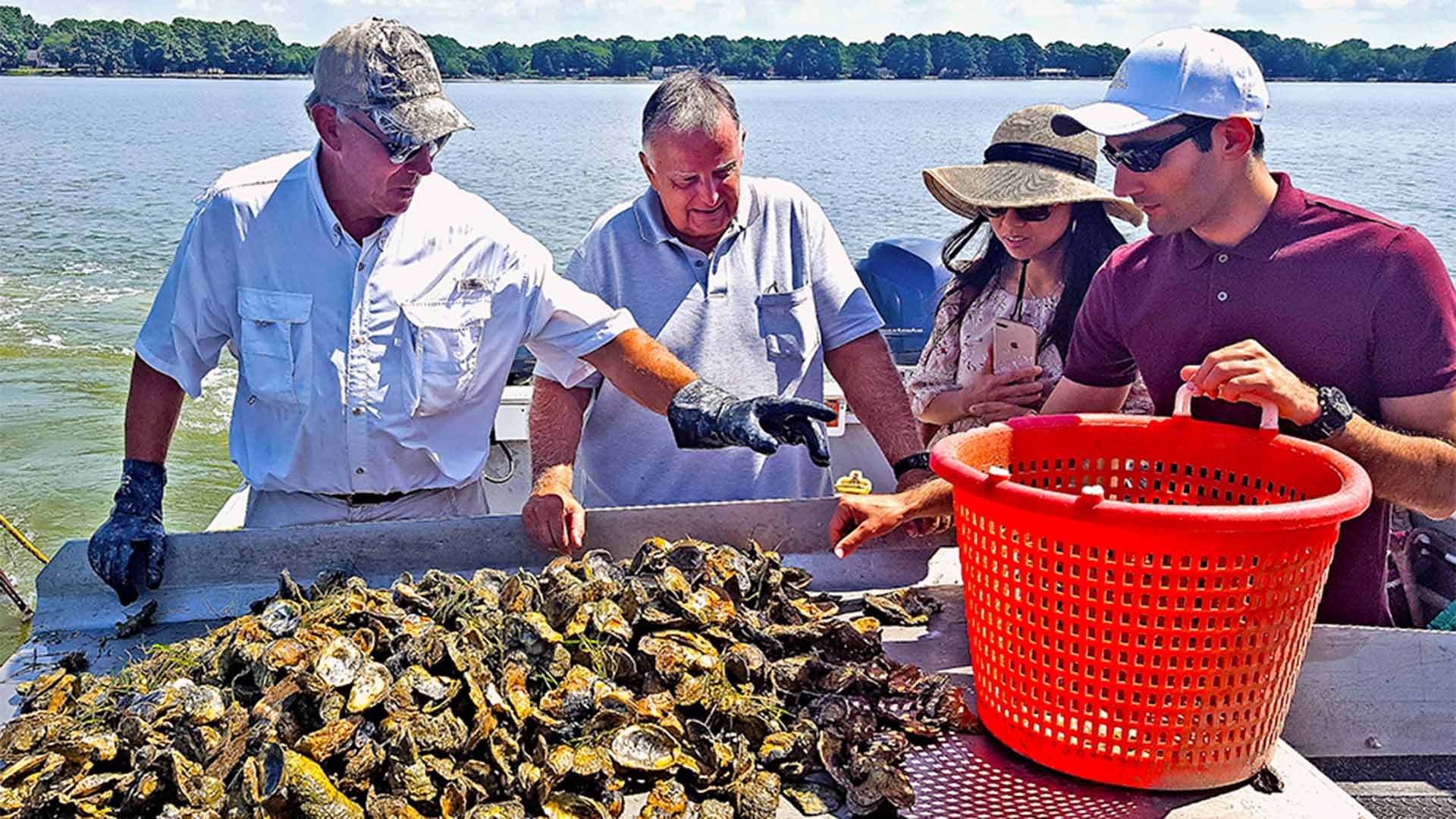- June 25, 2020
- By Melissa Andreychek
University of Maryland engineers are leading a research team that received a $10 million grant from the U.S. Department of Agriculture’s National Institute of Food and Agriculture to accelerate sustainable shellfish aquaculture, an industry hampered by antiquated methods and tools that go back hundreds of years.
The team, headed by UMD mechanical engineering Professor Miao Yu, will develop novel technologies and a sustainable management framework to help farmers tap the economic potential and environmental benefits of growing oysters, mussels and scallops.
“By developing and incorporating advanced technologies into shellfish farming, including the use of underwater drone monitoring and smart harvesting, we can bring about a major boost in production,” said Yu, who has appointments in the Institute for Systems Research and Maryland Robotics Center.
 Aquaculture of shellfish is perhaps the most ecologically sustainable form of aquaculture, as well as an important driver of coastal economies. The Food and Agriculture Organization of the United Nations has ranked the U.S. high for potential industry growth of the high-quality and nutritious protein source.
Aquaculture of shellfish is perhaps the most ecologically sustainable form of aquaculture, as well as an important driver of coastal economies. The Food and Agriculture Organization of the United Nations has ranked the U.S. high for potential industry growth of the high-quality and nutritious protein source.
But current practices and technologies used in shellfish farming have many shortcomings. For example, harvesting of bottom-culture shellfish relies on dredging, in which machinery drags a net across the bottom of an ocean, bay or other body of water to collect buried shellfish. The process is highly imprecise and can be ecologically catastrophic by damaging reefs, which are important habitats for oysters and other aquatic species.
The research team of engineers, biologists, computer scientists, economists and educators at UMD as well as from the University of Maryland Center for Environmental Science (UMCES), University of Maryland Eastern Shore, Louisiana State University, Pacific Shellfish Institute, Virginia Polytechnic Institute and State University and Fraunhofer USA Center for Experimental Software Engineering will synthesize recent advances in the fields of robotics, agricultural automation, computer vision, sensing and imaging, and artificial intelligence.
“We have extensive experience in drone navigation and object recognition, but this project will give us the opportunity to develop new techniques and theories for underwater computer vision and robotics. The underwater environment is very noisy with poor lighting, which presents many challenges we’ll have to overcome to be successful,” said Yiannis Aloimonos, a collaborator on the grant and UMD professor of computer science with a joint appointment in the University of Maryland Institute for Advanced Computer Studies.
One such example the team hopes to implement is smart precision oyster harvesting. This process would combine advanced technologies to overcome some of the challenges unique to seafloor farming.
“In land agriculture, tractor operators use visual cues such as rows of crops to achieve precise harvesting; however, there are no geo-visual cues available for shellfish farmers. This, coupled with the inaccuracy of naval GPS, leads to disorganized and wasteful dredging paths,” said UMD bioengineering Professor Yang Tao, a collaborator on the grant. “A smart dredging process that incorporates available, modern technologies such as real-time, high-precision GPS, underwater imaging and sonar positioning, and advanced environmental sensing would help—and these are solutions within reach.”
The Maryland-led effort has the potential to do good in the Chesapeake Bay region, where oysters have a long history, and the aquaculture industry is expanding. According to the Chesapeake Bay Foundation, the Chesapeake Bay’s oyster aquaculture industry, representing hundreds of farmers, is growing about 15% a year.
“Oysters—including those being grown in farms—improve the environment, so the expansion of the industry will also benefit the Chesapeake Bay’s health,” said Matthew Gray, a UMCES assistant professor and collaborator on the grant. “We’re excited to see how technology can improve production while at the same time making that production more ecologically sustainable or even beneficial to the environment.”
